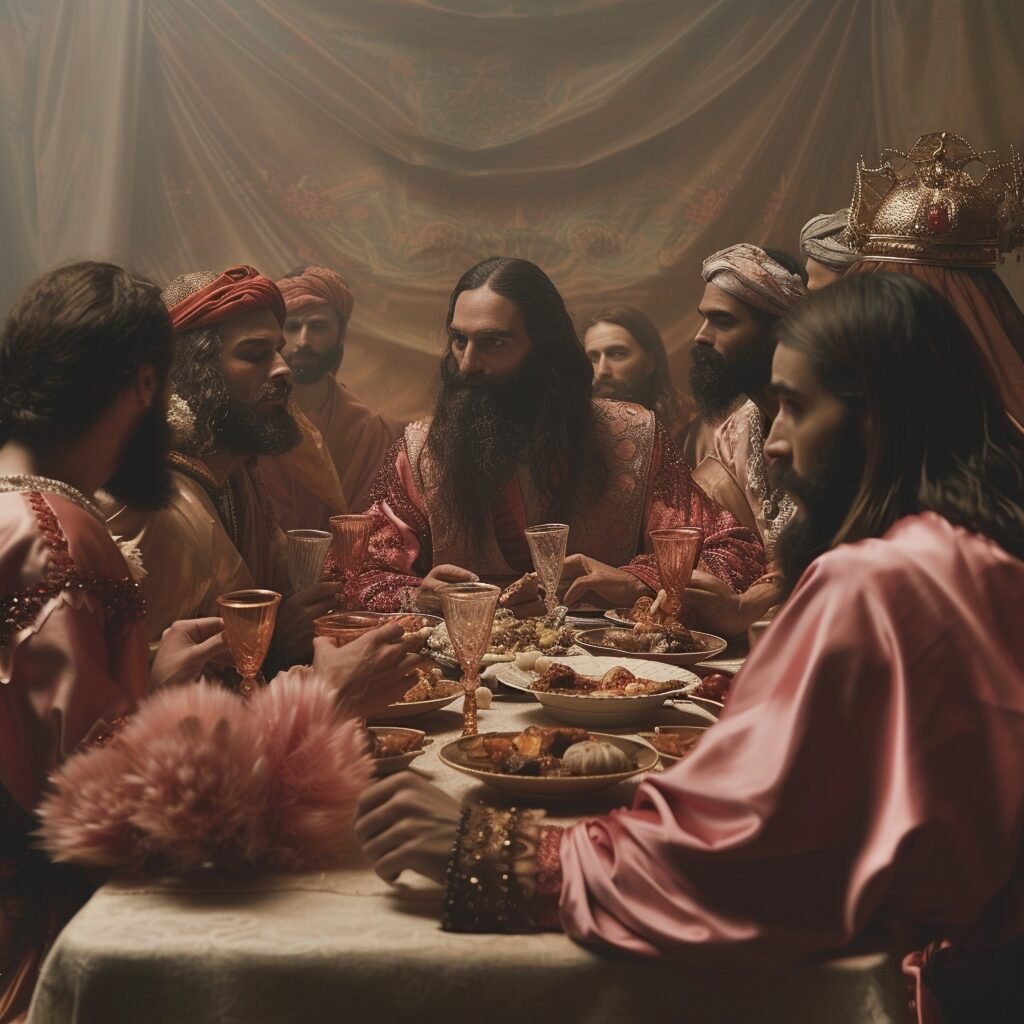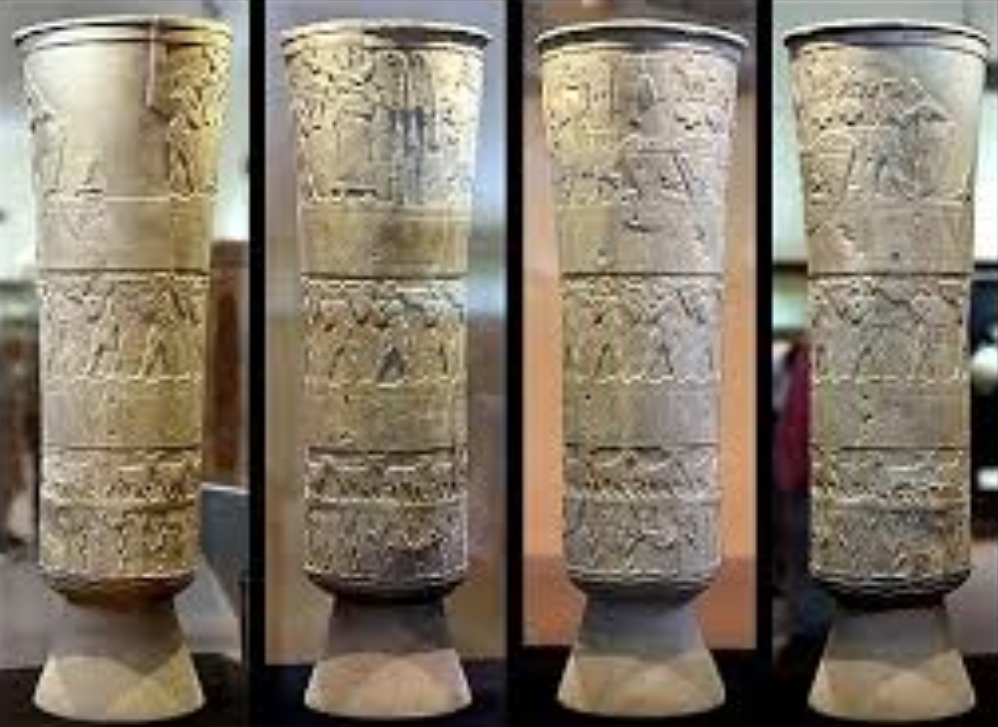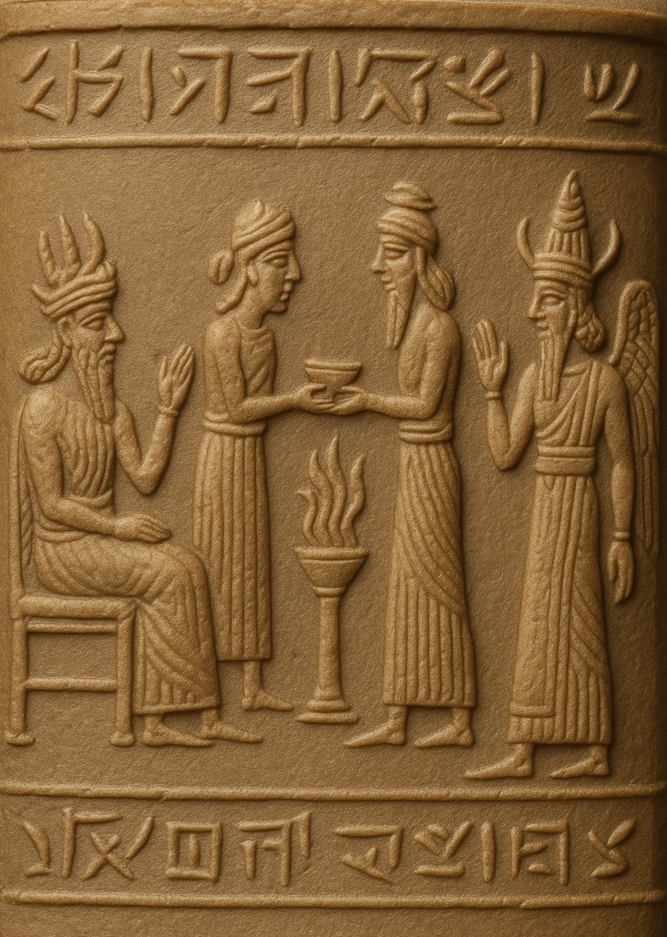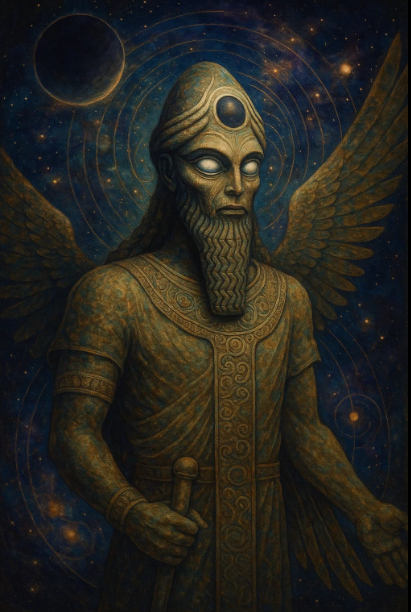Feasting with the Anunnaki: Ancient Gods, Alien Diets & Cosmic Cuisine

By Forks&FootPrints | Powered by WorldFoodDirectory.com
When we think about the history of food, most of us envision age-old recipes passed down through generations, the smoky aroma of clay pots simmering over open fires, or the slow but revolutionary transition from hunting and gathering to farming. We think of earthly things—flavors rooted in the soil, recipes shaped by geography and time.
But what if we reached further—beyond borders, beyond timelines, even beyond the stars?
What if we dared to ask: What did the gods eat?
Or, even more provocatively: What did the Anunnaki consume during their time on Earth?
The Anunnaki are not your average mythological beings. Often described in ancient Mesopotamian lore as powerful deities—guardians of destiny, creators of mankind—they are also central figures in a swirl of modern theories that depict them not as gods, but as extraterrestrial architects of civilization. Whether portrayed in the sacred texts of Sumer, Akkad, and Babylon or reimagined in the speculative works of ancient astronaut theorists, the Anunnaki represent a fusion of divine mythology and cosmic possibility.
And here’s the most fascinating part: for all their might, mystery, and alleged cosmic origin, they too were said to dine.
Ancient tablets speak of offerings, feasts, and ritual meals. Food, it seems, was a language of respect, a bridge between mortal and divine, between Earth and the heavens. But was it symbolic… or essential? Was their sustenance purely ceremonial—or something far more mysterious?
This isn’t just a culinary curiosity. It’s a gateway into one of the most enigmatic and thought-provoking intersections of myth, history, and speculative science.
Welcome to a journey where ancient recipes meet ancient astronauts. Welcome to the table of the Anunnaki.

The Warka Vase – One of the earliest depictions of ritual feasting, believed to honor deities like the Anunnaki
🍇 Divine Appetites in the Oldest Civilizations
In the oldest surviving texts—such as the Enuma Elish (the Babylonian creation myth) and the Epic of Atrahasis—the Anunnaki are depicted not just as distant rulers or cosmic creators, but as beings who deeply participated in the sensory world. They weren’t aloof from human activity; they relished in ritual, order, and yes—offerings. Grains, honey-sweetened fruits, roasted meats, and even fermented barley beer were prepared in their honor, arranged meticulously on altars and temple tables by devoted priests.
But these were no ordinary meals. These were sacred feasts, symbolic banquets meant to sustain the delicate balance between gods and mortals. In Mesopotamian culture, feeding the gods was not merely an act of devotion—it was an existential obligation. The offerings weren’t about indulgence or gluttony. They were about maintaining cosmic harmony. Without them, it was believed, divine order could collapse, and chaos could return to the world.
This belief reflected a worldview where humans were created specifically to serve the Anunnaki—to lighten the gods’ burden and to tend to their earthly needs, especially through worship and nourishment. Temples functioned like celestial kitchens, where carefully prepared meals were “served” at specific times of day, mirroring the rhythms of life and the cycles of the heavens.
Interestingly, the gods were believed to derive sustenance not from the food itself, but from the essence or aroma of the offerings—the smoke rising from burnt meat, the steam from grain porridge, the scent of crushed herbs. These aromas were considered spiritual nutrients, carrying gratitude, loyalty, and order back to the divine realm.
So, while the Anunnaki may have dined, it was in a way vastly different from mortal meals. Their consumption was layered with meaning, myth, and metaphysics, revealing just how central food was—not just to physical life, but to the structure of belief, governance, and sacred duty in the ancient world.

Cylinder seals like this one depict scenes of divine beings receiving offerings.
🛸 Ancient Food… or Ancient Fuel?
Fast-forward to the modern era, and a whole new dimension opens up—one that blurs the line between mythology, archaeology, and science fiction. In the provocative works of Zecharia Sitchin and other proponents of the ancient astronaut theory, the narrative shifts dramatically.
The Anunnaki are no longer seen as gods in the traditional sense, but as extraterrestrial engineers—highly advanced beings from a distant planet called Nibiru, who came to Earth not to enlighten humanity, but to extract a resource more valuable than any artifact: gold.
Why gold? Not for jewelry or currency, but for its purported ability to stabilize atmospheres and enhance life, especially when ingested or atomized. In this reimagining, the Anunnaki didn’t just need labor, they needed sustenance, fuel, and perhaps even longevity-enhancing nourishment. Humans, genetically modified to serve them, weren’t just miners; they were also farmers, chefs, and stewards of sustenance.
Their diet, according to these speculative retellings, was built on familiar staples—grains, fruits, wine, and roasted meats—but with a cosmic twist. Some theories suggest they consumed monoatomic gold—a mysterious, non-metallic form of gold believed to elevate consciousness, regenerate cells, and even enable interdimensional awareness. In this lens, food wasn’t merely caloric—it was alchemical. It was fuel for advanced consciousness, a gateway to extended life, and possibly a medium for time-space travel.
Imagine: divine beings seated at a table not just of earthly abundance, but of technological delicacies, where food was both ritual and resource. Were the ancient feasts truly symbolic… or were they early echoes of a hidden science we have yet to fully grasp?
This view, while controversial and widely debated, adds an entirely new flavor to our understanding of ancient history. Whether myth, metaphor, or misunderstood memory, the idea of the Anunnaki consuming food not just for pleasure but for power is a tantalizing concept—one that invites us to question the very nature of nourishment and its role in the evolution of civilizations.
So… what really fed the gods?
The answer might not be in our cookbooks, but in the stars.

Modern artistic interpretations of the Anunnaki blend ancient myth with cosmic mystery.
🌍 Why It Matters Today
At Forks&FootPrints, we explore food not just through taste, but through time, myth, and meaning. Every grain, every flame, every recipe carries echoes of the civilizations that came before us. The story of the Anunnaki, whether viewed as divine beings or distant travelers, reminds us that food is never just food. It’s currency, offering, symbol, and memory all in one.
In ancient temples, lavish banquets weren’t about indulgence, they were ceremonies. In speculative realms, alien diets weren’t about flavor—they were about function and power. And today, though we may no longer leave fruits on stone altars, we still gather, we still offer, and we still tell our stories through shared meals.
What we eat—and who we serve it to – reflects more than survival. It reflects our values, our fears, our hopes, and our identity.
Whether you’re plating your grandmother’s stew, decoding the rituals of a vanished culture, or wondering what celestial beings might have savored on Earth’s fertile plains, one truth remains: Food connects us to the past, to each other, and perhaps, to the stars.
Hungry for more ancient secrets and cosmic culinary tales?
This is just the beginning.
Stay with Fork&FootPrints as we dig deeper into history’s kitchens, decoding the recipes of gods, mortals, and mysteries alike.
ErkQuorhw is not a professor, chef, or archaeologist—just your everyday guy with a deep, lifelong curiosity about food, mythology, religion, and culture. As the founder of WorldFoodDirectory.com, he created Fork&FootPrints to explore the flavors of history and the forgotten stories behind what we eat.
From ancient banquets to cosmic feasts, ErkQuorhw blends folklore, fact, and food into compelling narratives that make us think about our meals—and our ancestors—in new ways. Every article is an invitation to rediscover the soul of what’s on our plates.
🔍 “Every dish tells a story. I just like digging it up.”
